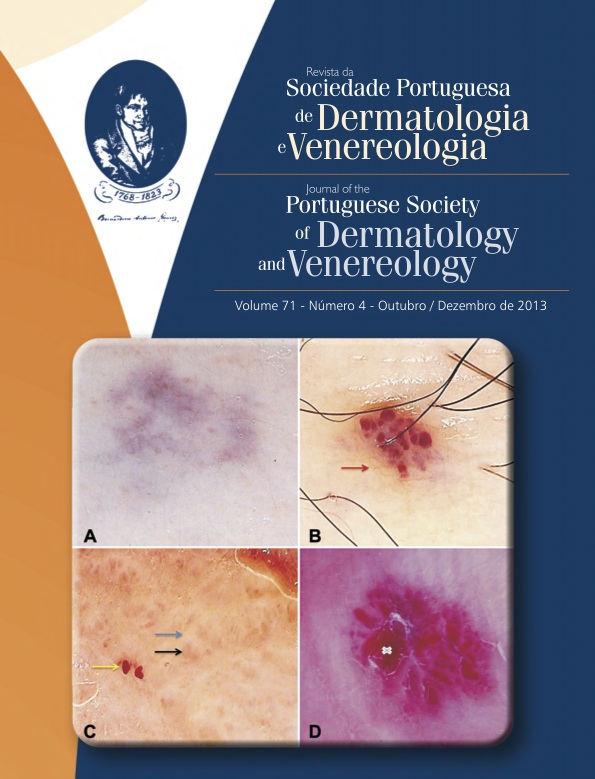SENTINEL NODE BIOPSY IN PORTUGAL - THE EXPERIENCE OF A REFERENCE A CENTER
Abstract
Background: Sentinel lymph node biopsy is undertaken as a standard procedure for patients with localized cutaneous melanoma. The National Comprehensive Cancer Network (NCCN) melanoma panel has reinforced the status of Sentinel lymph node biopsy as the most important prognostic factor for disease survival.
Objectives: We sought to identify predictive factors associated with positive SLN biopsy and correlation with overall survival in our population.
Methods: A retrospective chart review of 221 patients who had undergone successful Sentinel lymph node biopsy for melanoma between 2004 and 2010 at our department was done. Univariate and multivariate analyzes were performed.
Results: Sixty-one point five percent of patients were women and the mean age was 59.3 years. Most of the primary lesions were located on the lower limbs (43%), mainly on the feet (21.3%). The Sentinel lymph node biopsy was positive in 48 patients (21.7%). Univariate analysis showed that male gender, increasing Breslow thickness, tumor type, and presence of tumor-infiltrating lymphocytes were significantly associated with a positive Sentinel lymph node biopsy. Multivariate analysis confirmed that Breslow thickness and the presence of tumor-infiltrating lymphocytes are independently predictive of Sentinel lymph node metastasis. The 5-year survival rates were 53.1% for Sentinel lymph node positive patients and 88.2% for SLN negative patients. Breslow thickness and the Sentinel lymph node status independently predict overall survival.
Conclusions: The risk factors for positive Sentinel lymph node biopsy in our study were consistent with those previous found in the literature. In addition, Sentinel lymph node status is a major determinant for survival, which highlights its importance in melanoma management.
Downloads
All articles in this journal are Open Access under the Creative Commons Attribution-NonCommercial 4.0 International License (CC BY-NC 4.0).








